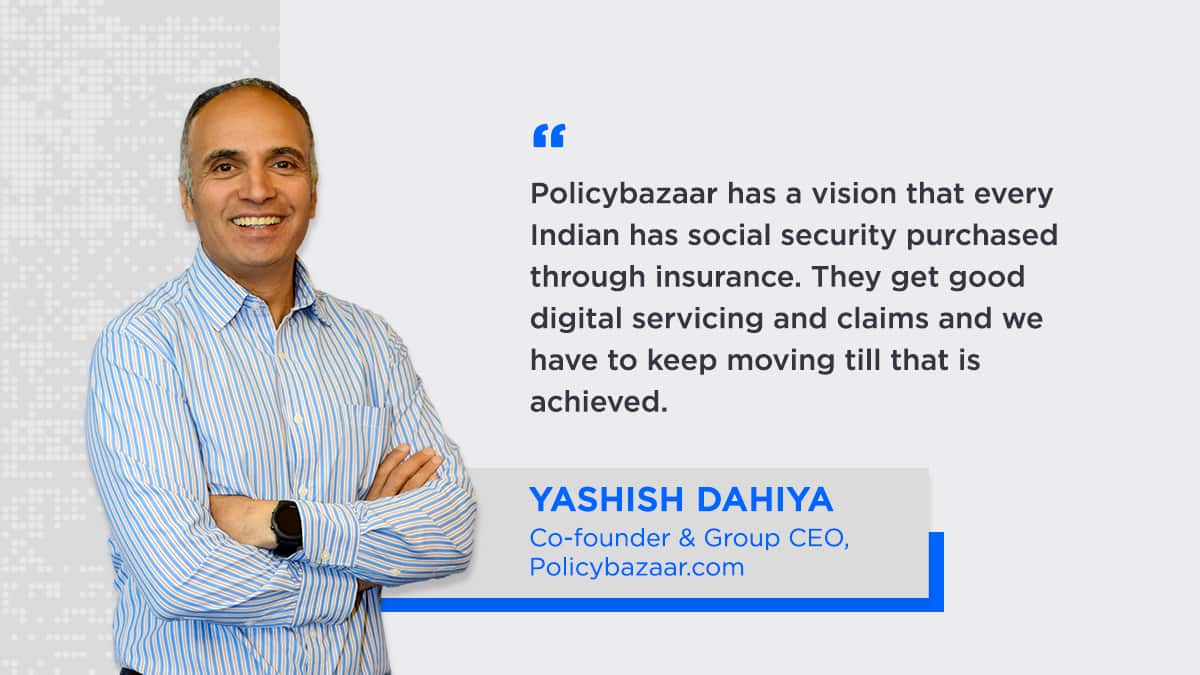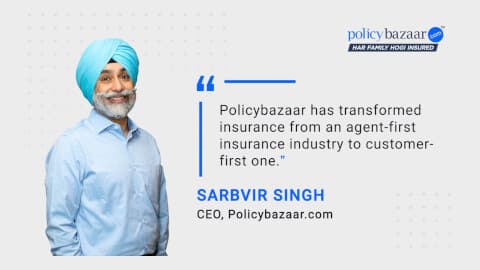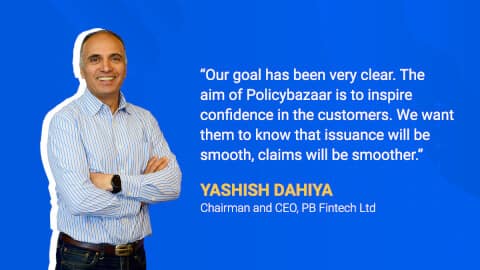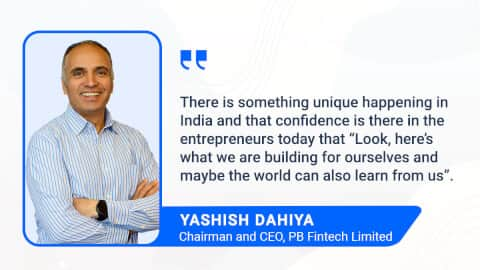1
Q3 FY24: PB Fintech posts strong numbers, PAT positive with 43% revenue growthLeader Speak
Policybazaar is hopeful of achieving the vision of social security through insurance in 5 to 10 years: Yashish Dahiya
An organization must have a vision and a set of values as they define the purpose and direction of the business. No business can run without a clear vision. Back in 2008 when Policybazaar started, the founders had a clear goal which was to build a safety net through insurance for 250 million-plus households in India. In just 12 years, it has become the single largest distributor of insurance outside of banks through its disruptive model of comparing insurance products online.
“Policybazaar has a vision that every Indian has social security purchased through insurance. They get very good digital servicing and claims and we have to keep moving till that is achieved. I think we are about 5% there. We might achieve this vision within 5-10 years,” said Yashish Dahiya, Co-Founder and Group CEO, Policybazaar said at Fintech Abu Dhabi 2020 webinar. The theme of the webinar was ‘A look inside an Indian fintech unicorn’.
“Things are happening a little faster than I thought they would. Didn't think Policybazaar will achieve the kind of success it has got in such a small time frame,” said Dahiya. Policybazaar hosts over 100 million visitors every year, 2,73,973 visitors in a day, and about 11,416 visitors every hour seeking information on insurance.
“Over the last 12 years, the consumer is willing to use insurance as a means for social security especially in the middle class. Life and health insurance have become the most researched category within insurance in India whereas in other countries motor insurance is most researched,” added Dahiya.
Dahiya feels that insurance is of all the more relevant for Indians now because of the changing social dynamics from a joint family system to a nuclear family system. He also said that Covid-19 had a huge impact on businesses but fortunately Policybazaar was lucky to be in a situation where it is a digital business and demand for insurance is growing. “The good news is that the insurance industry is robust. Its got deep capitalization so it should be able to live through this and should be able to pay the claims etc. But I think that the customer pain is deep right now,” added Dahiya. The webinar was hosted by HB Lim, Director, Financial Services Regulatory Authority, Abu Dhabi Global Market. Edited excerpts from the Q&A session:
Q1. You have expanded to UAE. It’s your first overseas venture. Why UAE? What’s your ambition and plans for it?
We started the first overseas venture in UAE because many Indians were working there and we saw some trickle of business coming from that perspective. As we move to UAE, we have found the market very ready for services like this. I think health insurance etc is still underpenetrated not just in the UAE but the greater Gulf region. We are increasingly confident and feeling good about expanding in the entire area. The requirements of pensions through retirement, healthcare, life insurance are just as important there as in India. Of course, the govt has evolved more, there is more support but there is a lot of migration population and it implies the same kind of fears post-retirement and on the loss of a job that would exist in India. From that perspective, it’s a great place to be. Our focus is on health and life insurance and I think we will grow there. In the UAE, a lot of focus is on pension.
Q2. Fintech companies often find themselves held in the regulator’s scrutiny. I am a regulator myself and I have always thought that as regulators, we must be innovators too. At ADGM, we think that regulations should be technology inclusive and we should have a constant dialogue with industry practitioners which is critical. You must have a lot of experience dealing with financial regulators. What message do you have for them?
((relatedarticle_1))
Over the last 20-30 years, the regulators have built a great regulatory framework and architecture with great care. In insurance, it was an architecture based on distribution. This means somebody would go to the door of the customer, explain the product, and would do some due diligence to make the transaction happen. When the customer starts engaging and says they want to buy. So, when insurance has become a pull product from the push product, the architecture gets challenged a bit.
It takes a bit of maneuvering to start aligning and the regulator has done a great job. A lot of participation in regulation comes from Public Sector Undertakings. They have been operating in a particular way for the last 20 years. Suddenly, that way is being challenged. It’s not been an easy process but they have progressed. They have made a lot of changes but there's one part which sometimes bothers me. What is the new thing? Many times we all get stuck in what's the next new thing rather than what has been the great thing in the last 5 years.
Many times change is driven by what has been the great thing in the last 5 years also. We have been there for 12 years as a company. Sometimes, there will be a fintech conference and we won't be there but when you have an insurance conference, we again won't be there because we are too new and too old at the same time. I think keeping the voice of players who have created a significant disruption, volume and change is important. It’s a difficult task from a regulatory perspective because at one point they are looking at what's the new thing in the industry and on the other side, they are listening to all the industry constituents and taking feedback.
((newsletter))














